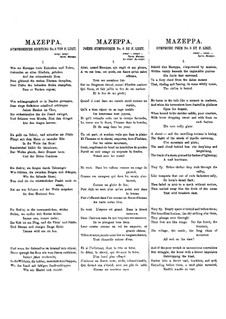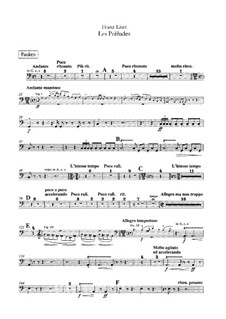


Regarding music, each country developed different opera and instrumental repertoires expressing the particularities of each population. Romantic nationalism is related to the research of an artistic and cultural identity of the European countries. In the second half of the 19th century, the national music school flourished. The supporters of absolute music thought that extra-musical ideas are not necessary to understand a work: the only important thing are the musical structures which are sufficient to understand music both rationally and emotionally while the supporters of programmatic music thought that extra-musical ideas help the understanding of music. His home became an important meeting center of the supporters of programmatic music facing the supporters of absolute music, that is the music without a program. In this period he devoted himself to teaching and to composing. In 1848, Liszt moved to Weimar in Germany to serve as conductor of the court orchestra. Being considered by the majority the best piano player of the 19th century, Liszt made a long and triumphant tour in Europe between 18. The Hungarian musician Franz Liszt (1811-1886) is considered the creator of the symphonic poem.

It also shows the romantic aesthetics in which the composer wants to share with the listener the extra-musical ideas which inspired him. The symphonic poem has a continuous musical flow, without interrupting it with multiple movements. There are some examples of programmatic music before the symphonic poem: for example, The Four Seasons written by Antonio Vivaldi (1678-1741), or the Fantastic Symphony written by Hector Berlioz (1803-1869). Sometimes the extra-musical idea is specified in the score. The symphonic poem is a programmatic genre: this means that, at least in the title, there is an extra-musical idea. Firstly, it is an orchestral work in one movement, but it contains many sections which differ in tempo, pace and character. Neither Wagner nor Brahms wrote symphonic poems in the Lisztian sense so it stood to reason that neither did their respective followers.The symphonic poem, also called a tone poem, has really precise peculiarities. Either one was Wagnerian, devoted to the idea of music drama, which usually meant opera, or one was Brahmsian, devoted to the idea of symphonic composition. One usually had to ally oneself with one or other approach to composition. German music in the second half of the 19th century was dominated by two composers, Wagner and Brahms.

German composers largely ignored the form in the mid-to-late 19th century for one peculiarly German reason. But it's interesting that in writing, performing and - most importantly - publishing his symphonic poems in Germany, Liszt didn't establish a lineage of other composers who took up the idea and wrote their own symphonic poems. Firstly he invented the term and wrote a substantial body of work exploring the concept, and secondly, most of this body of work is not widely known or regularly played today, and I think it should be. I've spent quite a bit of time on Liszt's symphonic poems for a couple of reasons.


 0 kommentar(er)
0 kommentar(er)
